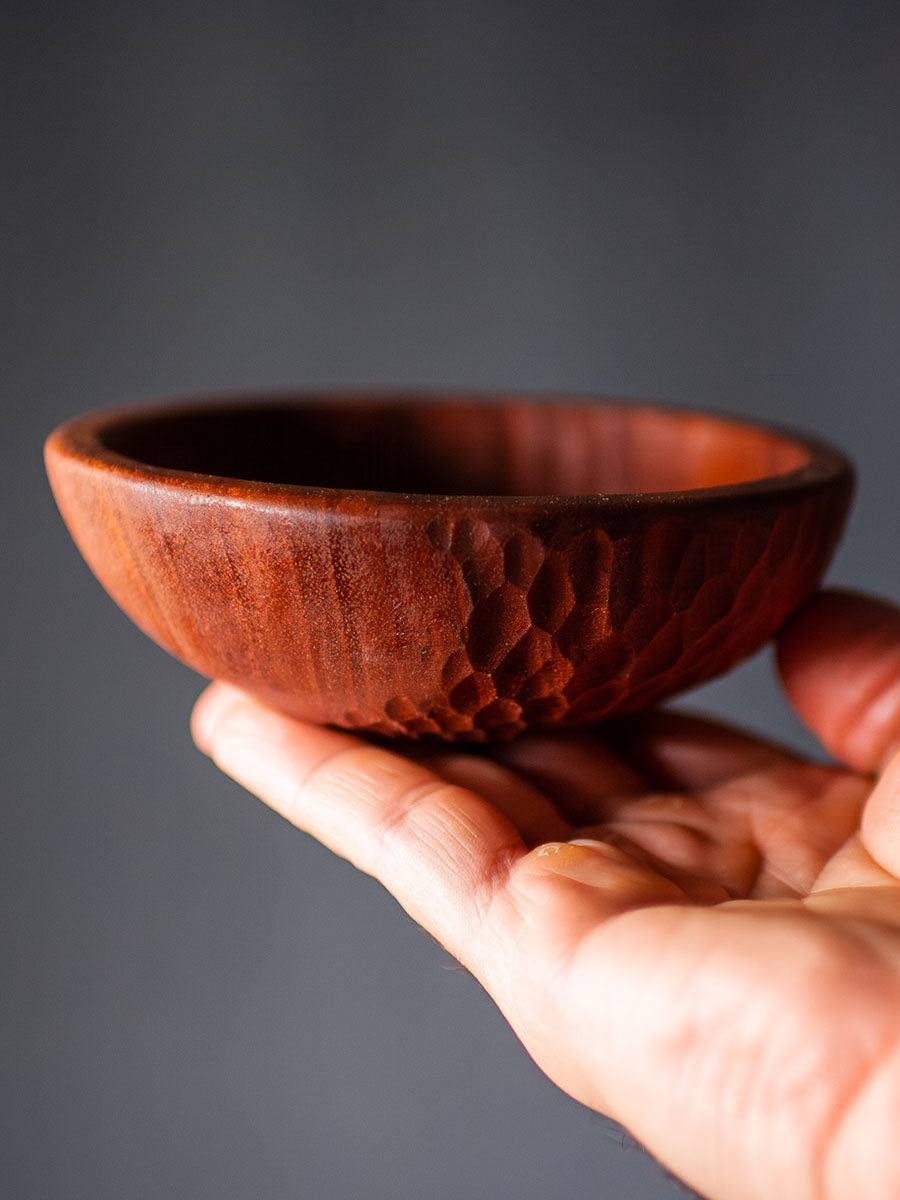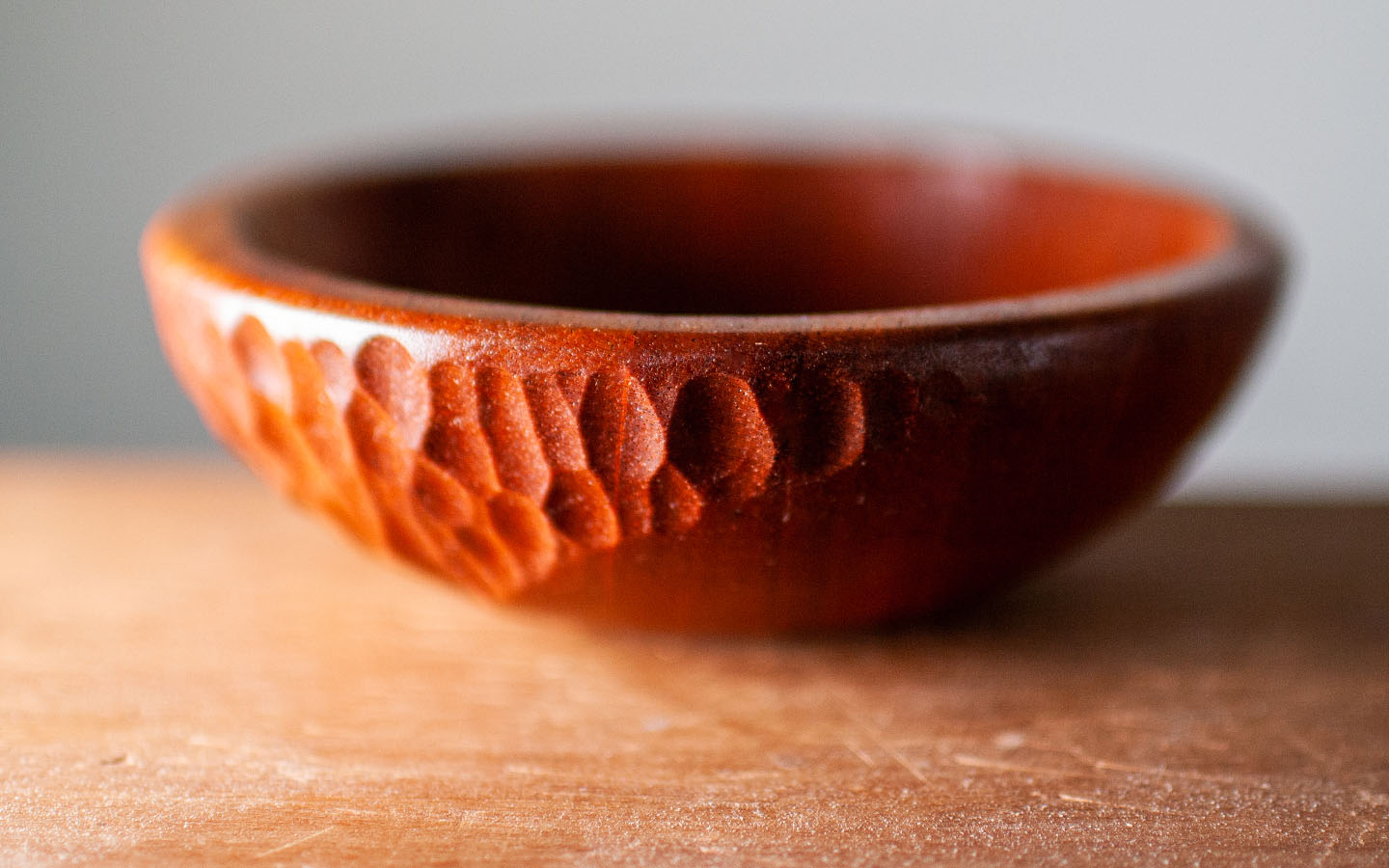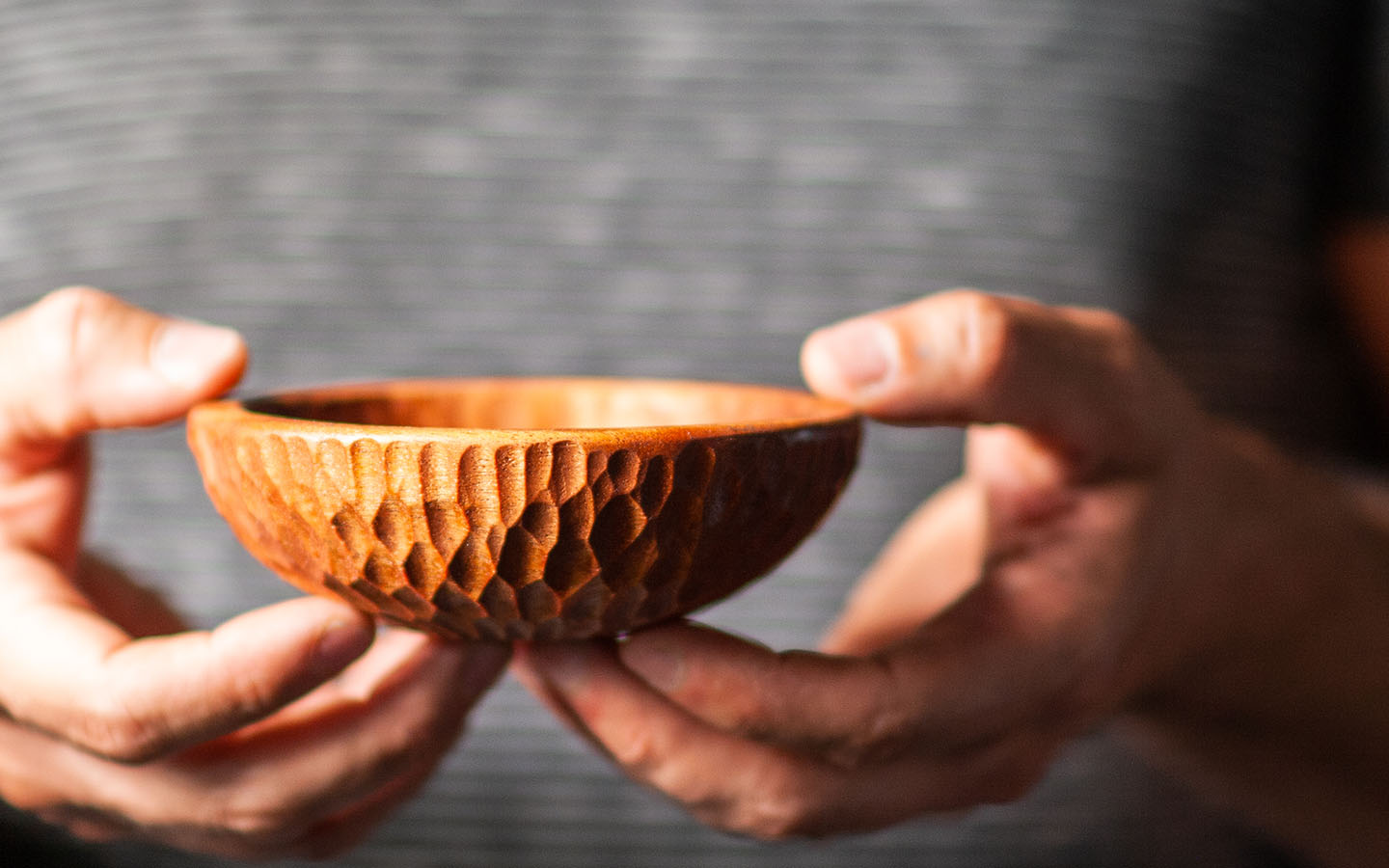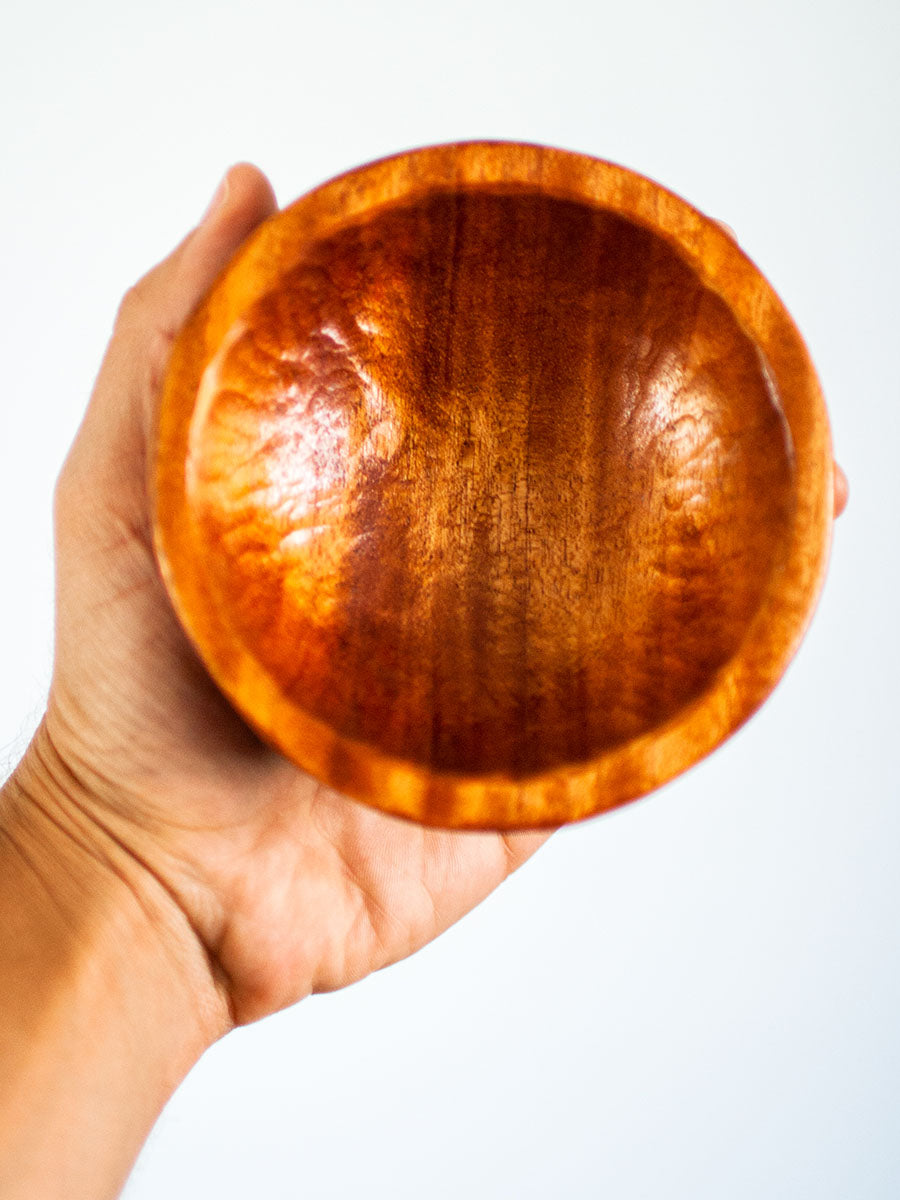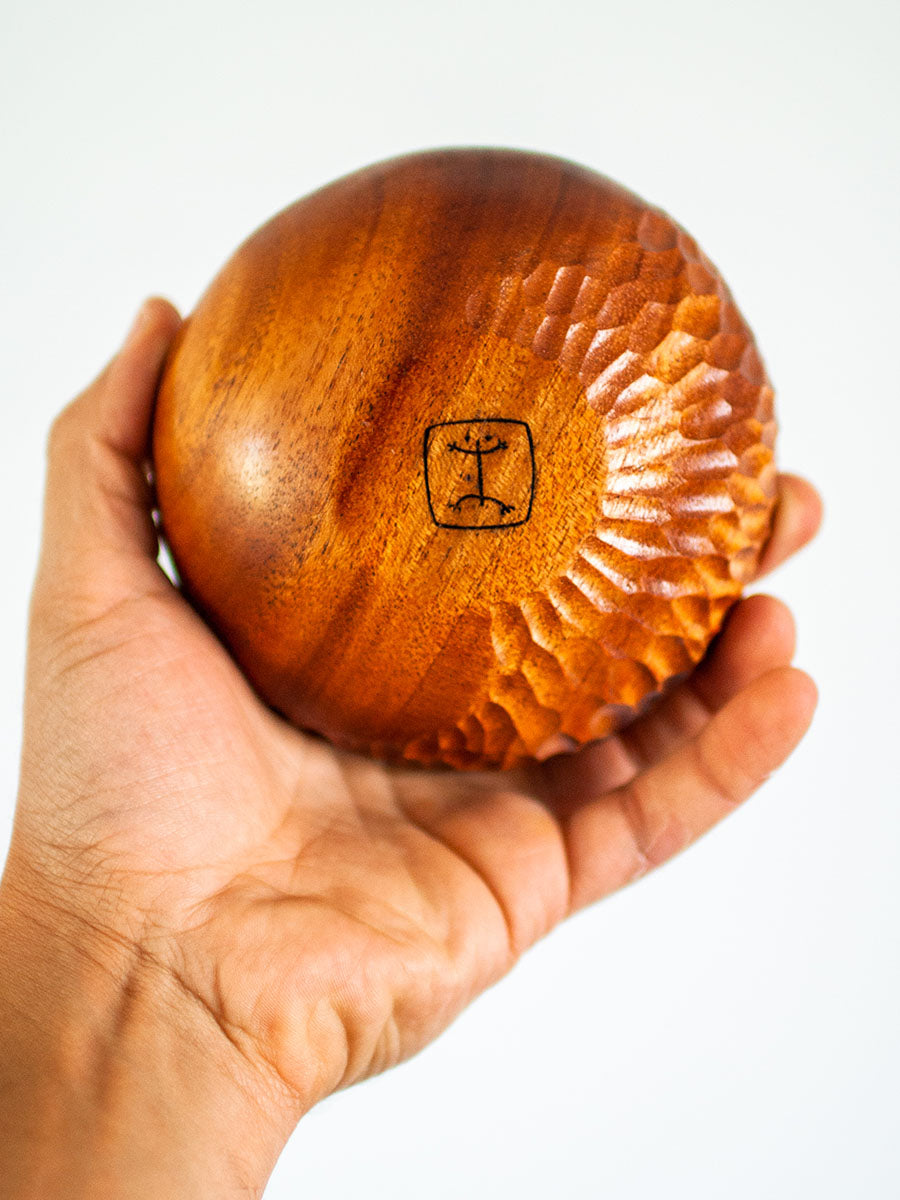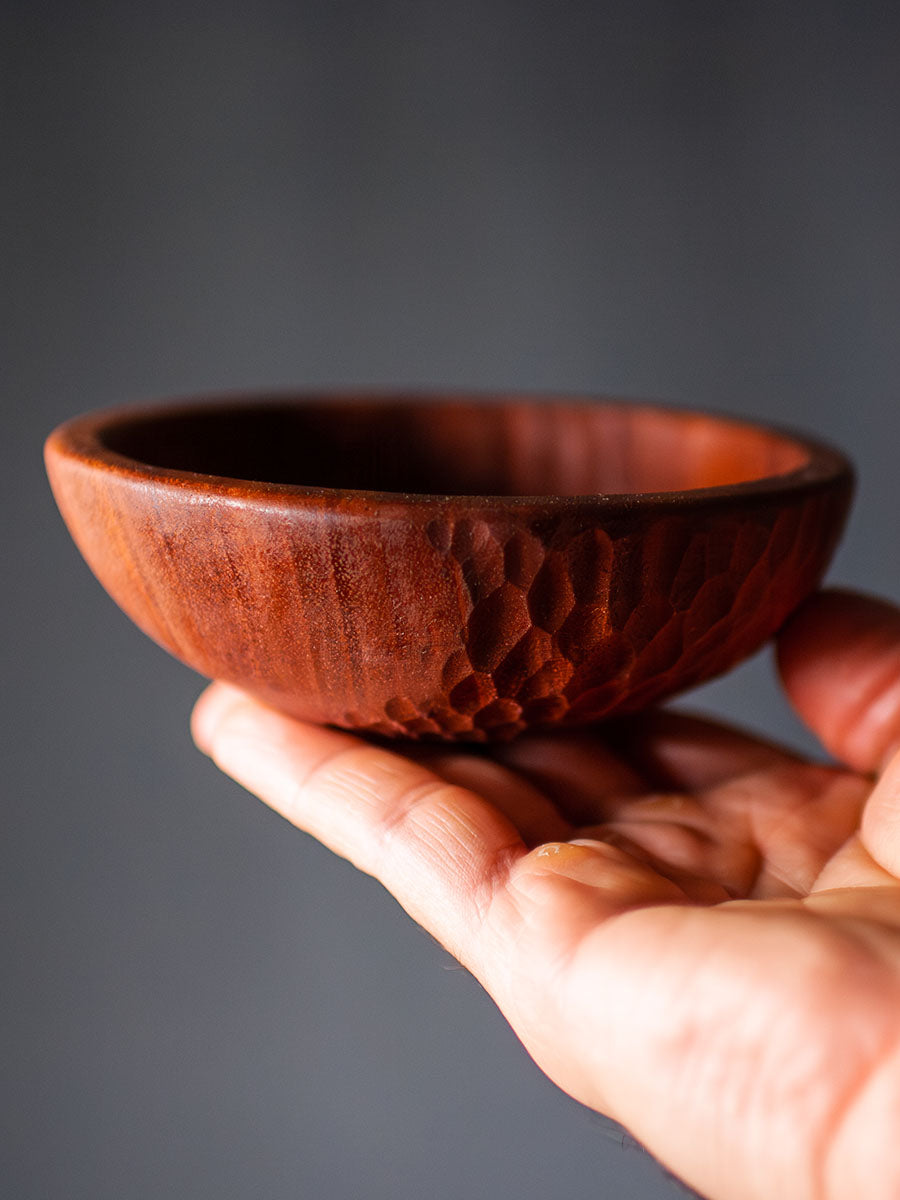
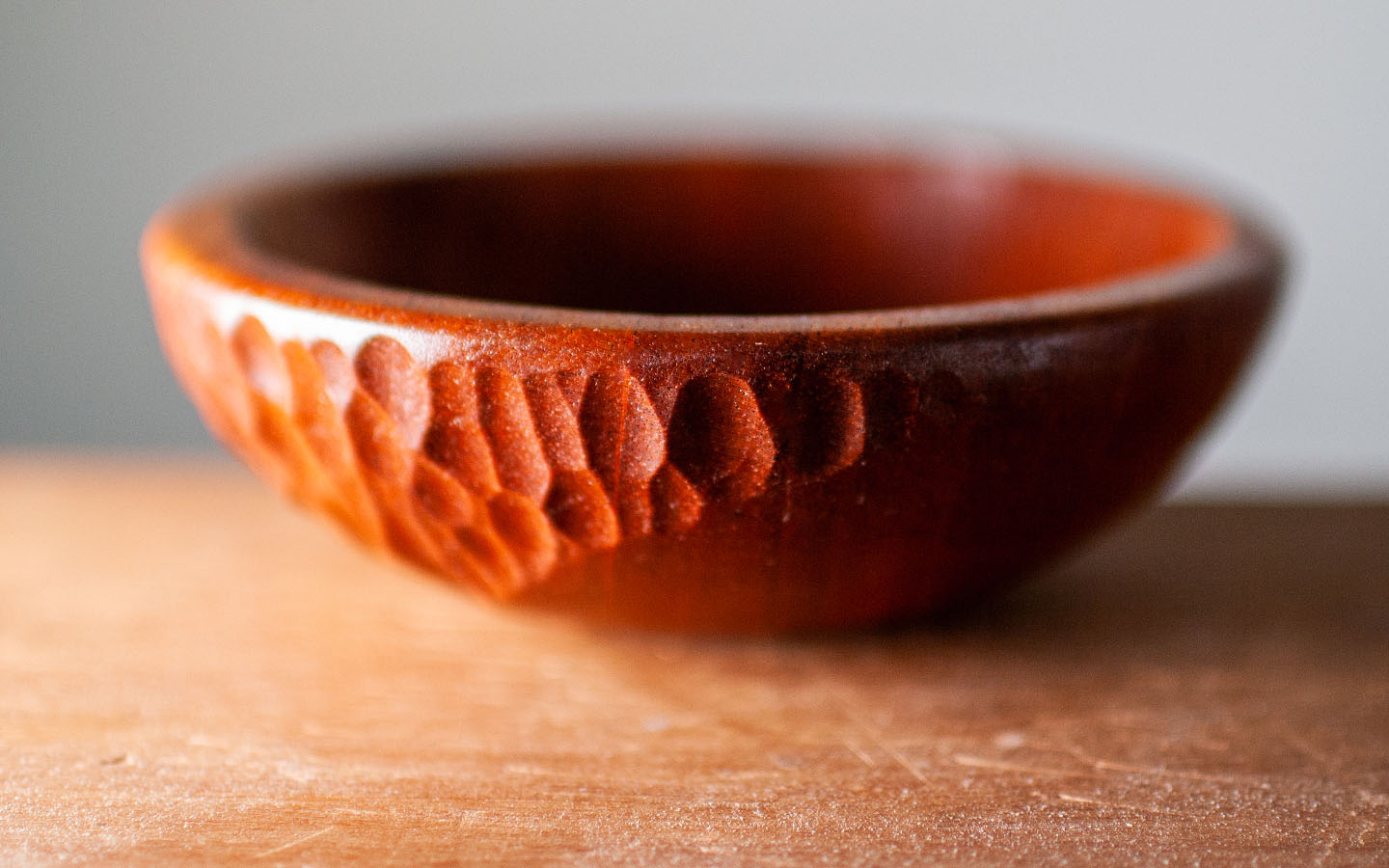
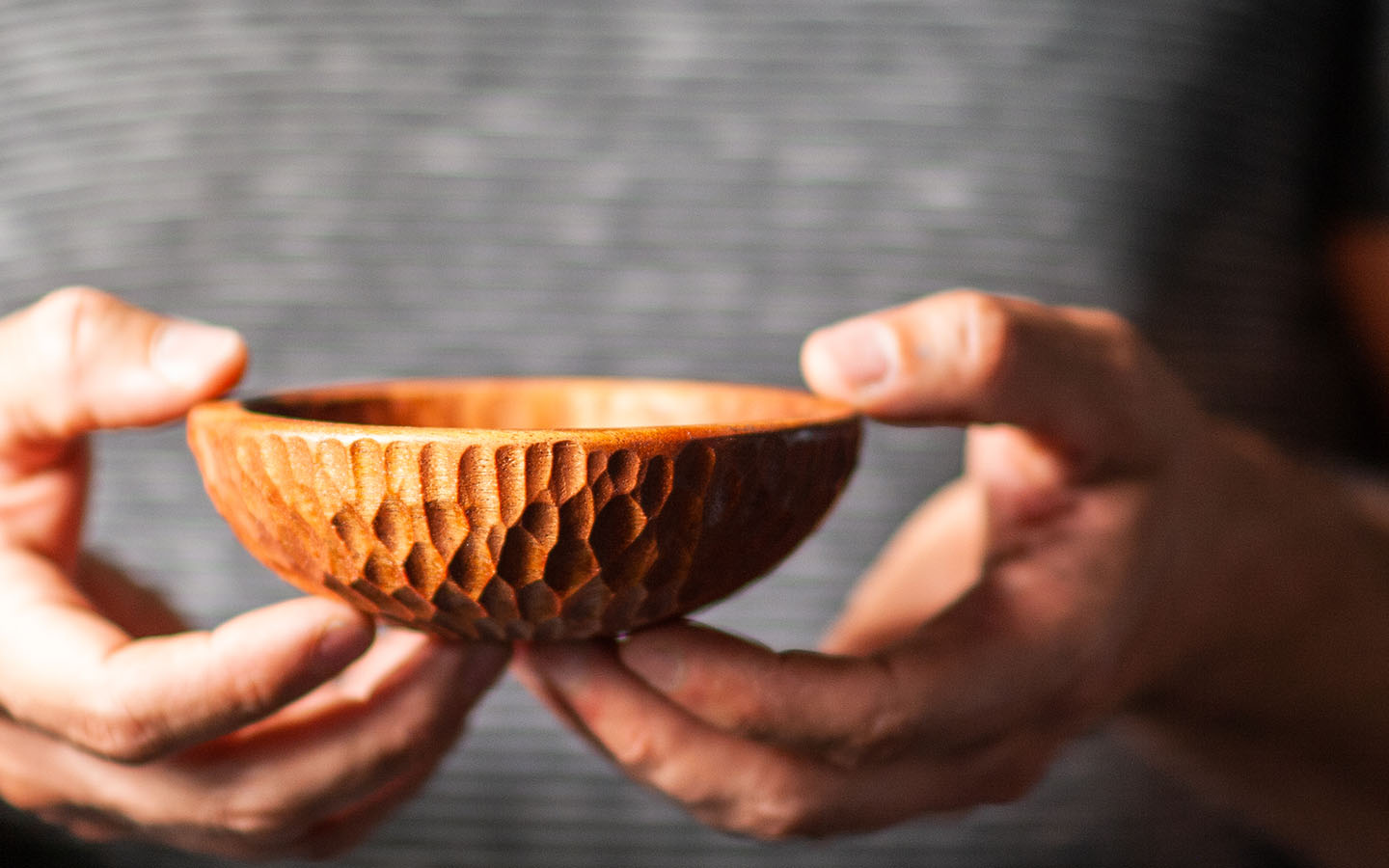
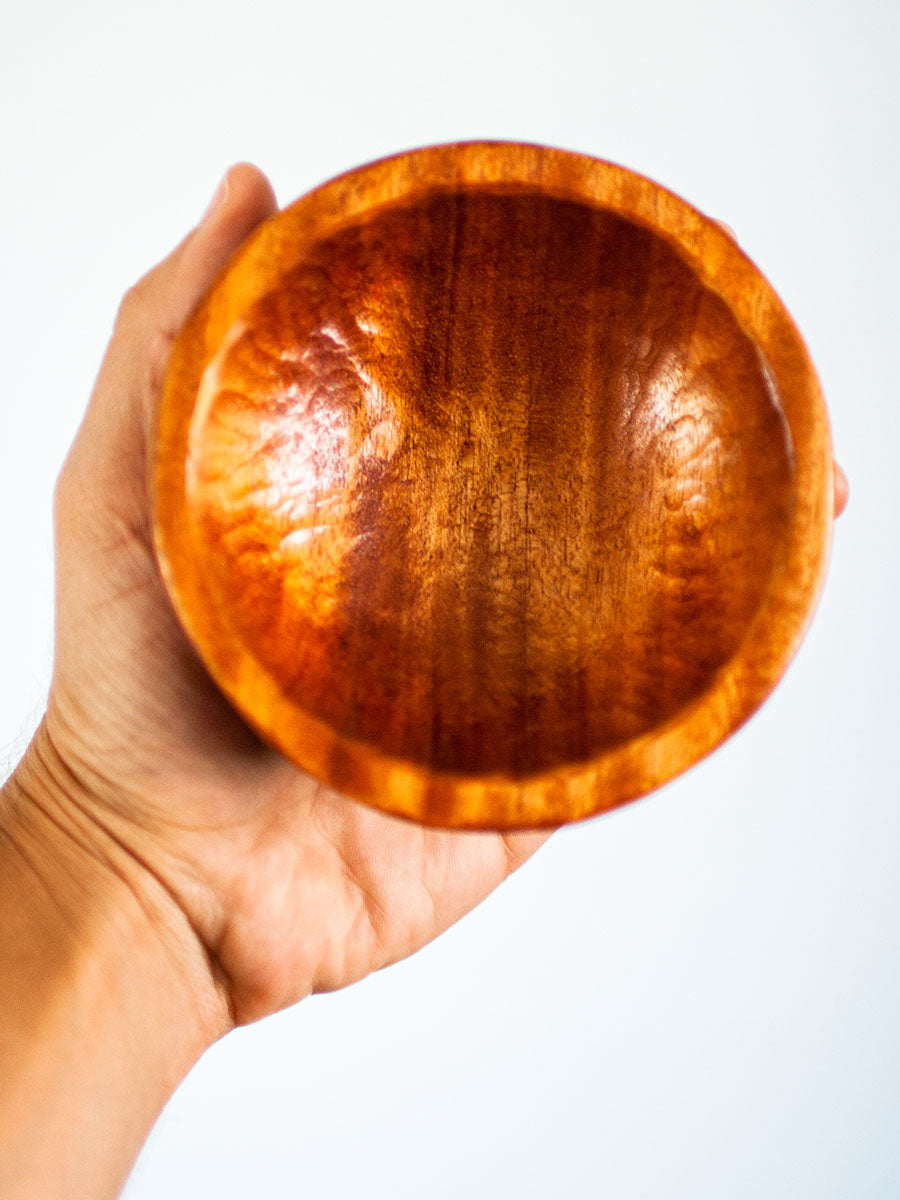
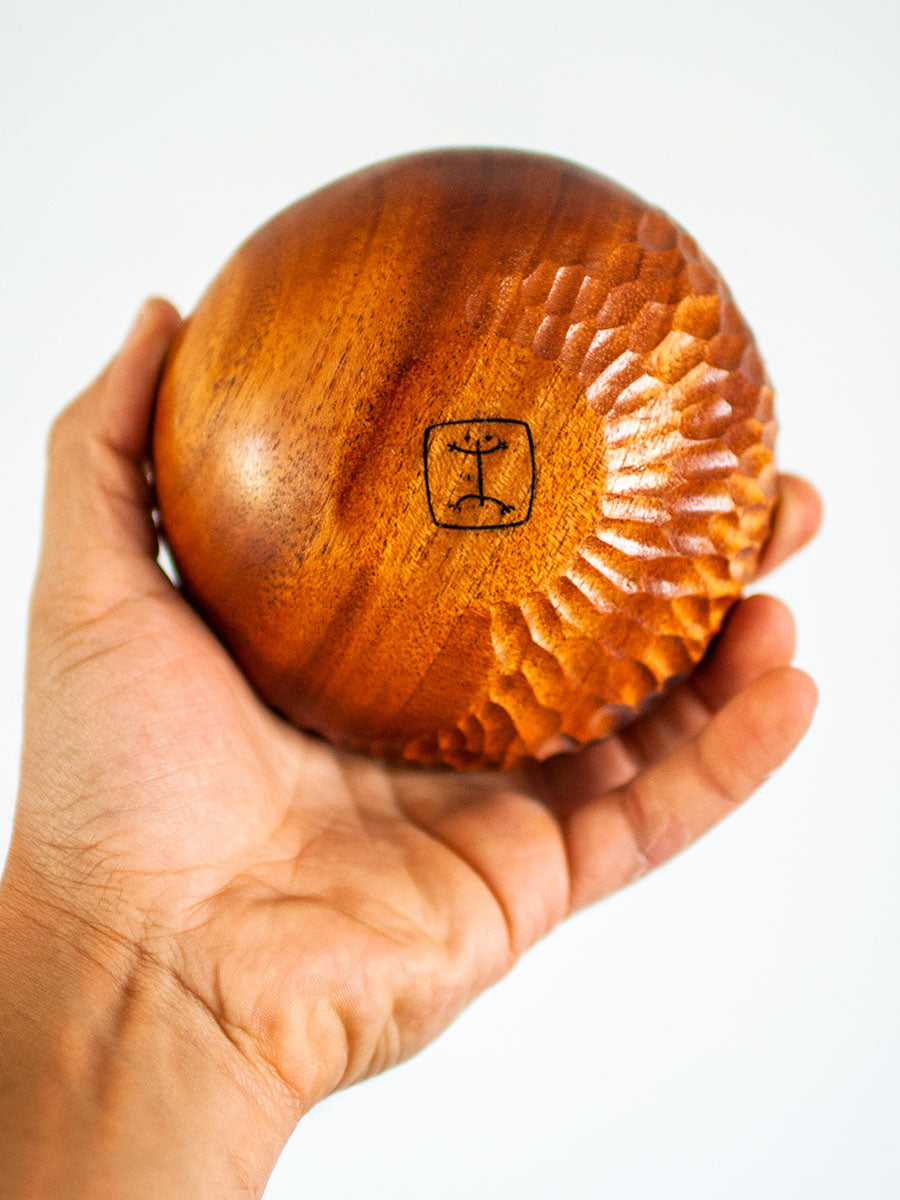
Care & Food-Safe Finishes
Caring for Kitchenware:
Handwash your food-contacting woodware with warm water and dish soap. Bear in mind that soap won't harm wood or finishes, but the water will, eventually. Dry promptly after washing and avoid soaking for extended periods of time.
Should the finish start to look "thirsty," treat with safflower or walnut oil; let soak for 10-20 minutes, then wipe off all excess and allow to dry. (See A Note on "Food-Safe" Finishes below for more information.)
A well cared for wooden utensil is sanitary and can last lifetimes.
Not dishwasher safe. Do not microwave or refrigerate.
Caring for Furniture:
To dust your furniture, simply wipe with a damp (not wet) cloth or chamois. Dirt is water soluble. In rare cases where there is too much grime for general cleaning, you may dampen your cloth (still not wet) with a solution of mild soap and water.
Commercial liquid polishes won't necessarily damage the finish on your piece, but they're generally unnecessary and will in fact remove the longer-lasting beeswax polish your furniture will already come bearing. They also don’t provide a most of the benefits claimed by marketing, such as "feeding" or "moisturizing" the finish or the wood with "missing oils." Wood doesn't need oils added to it, and moisturizing it would actually be a bad thing. So I guess it's good that those claims are false!
The purpose of the beeswax I've applied to your furniture is to function as a polish over the finish, and to help prevent damage to the finish from bumps and friction. If over time you feel that your piece could use some fresh shine and protection, feel free to clean the surface, then polish with furniture paste wax, being sure to remove all excess. If buffed correctly, wax will not build up as many liquid polish brands claim. If you are unable to use wax, silicone polish can add a decent amount of shine and protection, but please be advised that this could potentially pose problems should your piece need refinishing down the line.
To extend the life of your finish and therefore the wood beneath it, try to adhere to the following parameters whenever possible:
- Place your furniture away from direct sunlight, or make use of curtains and shades when possible. You may choose to cover especially precious pieces with a tablecloth (not plastic) if leaving for extended periods of time.
- Use trivets, coasters, placemats and tablecloths.
- To prevent the speeding up of oxidation, don't store your furniture in a very hot room such an attic or unconditioned storage facility.
- Use paste wax as outlined above to help reduce surface friction.
A Note on "Food-Safe" Finishes
There is an unfortunate thunderstorm of misinformation in the world about wood finishes in general, and perhaps the most unfortunate is the myth of the food-safe wood finish—a myth that gets propagated by marketing, woodworking publications, and even respectable, fellow woodworkers because they are simply unaware. I consider it one of my highest privileges in my woodworking education that I had a course dedicated solely to finishing, as I, too, would have been a cog in the myth-spreading machine otherwise.
The myth goes: any finish containing metallic driers (i.e. boiled linseed oil, varnish, etc.) will harm you if used on a food-touching surface. But the truth is that all modern wood finishes are in fact food-safe so long as they are fully cured (please do not drink varnish!!!). Even certain finishes marketed as "food-safe" are in fact thinned varnish and nothing more.
So where'd this myth come from? Once upon a time, humans laced paints and finishes with lead as their metallic drier. That's it. You can see where it went. It wasn't good. But we don't do that anymore. Even humans can learn to do better every once in a while.
That being said, I don't much fancy the possibility of my bowls starting to peel and getting flakes of film finish in my food, or the idea of beeswax melting into my meals and ruining my carefully crafted recipe. And so my personal favorite choice for food-contacting woodwork is a blend of curing oils and thinned varnish. This results in a penetrating finish (as opposed to one that builds up into a film that could flake over time) that is longer-lasting and more protective of the wood than a simple oil finish.
And in case you've noticed that I recommended safflower or walnut oil to replenish your goods at home, there's a reason for that! A. it's a much more pleasurable experience for you, and B. you don't have to worry about the finish causing you harm should you decide to use your spoon before it's fully cured. Unless you're allergic to walnuts or safflowers. In which case, please don't put something you're allergic to in your food.
Thus concludes this wood-loving geek's rant on food-safe finishes. Thank you for your time! Now go! Take a look around! Enjoy life knowing things you maybe didn't know that you didn't know!

